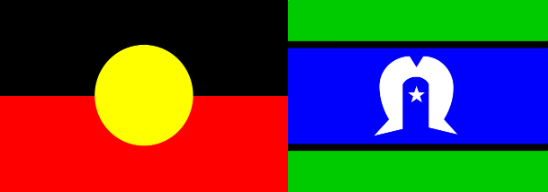
Images Source: here
In 2011, almost 670 000 Aboriginal and Torres Strait Islander people were living in Australia
Australia’s aboriginal people have faced extreme historical persecution. So much so, that in 1998 Australia implemented an annual, “National Sorry Day.” This holiday serves as a form of recompense, and it raises awareness of indigenous populations. So who are Australia’s aboriginal people? Well, Australia is home to many different indigenous populations. They include the Wiradjuri in New South Wales, and the Noongar in Western Australia. Aboriginal populations are often grouped together and referred to as “Aborigines”, however some consider the term pejorative. Instead, legally, the native populations of Australia are referred to as “Aboriginals and Torres Strait Islanders”. Some also prefer regional terms, like “Koori” in New South Wales, or “Murri” in Queensland.

Images Source: here
Recently, a genetic study found that native Australian peoples may have left Africa up to 75,000 years ago, “likely representing one of the oldest continuous populations outside Africa.” For centuries, they thrived in Australia, usually in nomadic societies. Some developed distinct tools like the boomerang, used for hunting, and the didgeridoo, a musical instrument which is still popular today. Their extensive legends and oral traditions are sometimes referred to as “Dreaming”, and help explain their way of life and the world around them.

Images Source: here
By the time Europeans first established a colony in Australia in 1788, native populations were thought to number around 300,000, and there may have been an estimated 300 different aboriginal languages spoken. However, with the subsequent colonization of Australia, new diseases, violence spurred by racism, and oppressive land-use policies devastated many of the traditional societies.
In 2011, 11 per cent of Aboriginal and Torres Strait Islander people spoke an Indigenous language at home
Currently, aboriginal people account for just 3% of the Australian population. Only about 75 aboriginal languages still remain, and many are in danger of dying out completely. Up until several decades ago, Aboriginals and Torres Strait Islanders, faced extreme racism, and government encroachment on their territories. Many were not given Australian citizenship, nor federal suffrage until the mid 20th century. Also, during that time, the Australian government supported forcibly taking aboriginal children away from their parents. The reason for such policies varied, but many claimed it was for “child protection” and “resocialization”. The children taken away from their homes were eventually known as the “Stolen Generation”, and were often raised to be domestic servants and laborers. The government has since formally apologized for their part in creating the “Stolen Generation”, and “National Sorry Day” is specifically in honor of them. Although in modern times, there has been a huge change in the government’s attitudes towards Aboriginal people, high rates of unemployment, poverty, crime, and health problems for the populations persist. Aboriginal representation in the Australian government also remains low. And even today, land disputes between indigenous groups and the government are ongoing.
Articles Source: Queensland Health
Articles Source: Australia Government
Articles Source: Australian Law Reform Commission

Thank you for your support.
